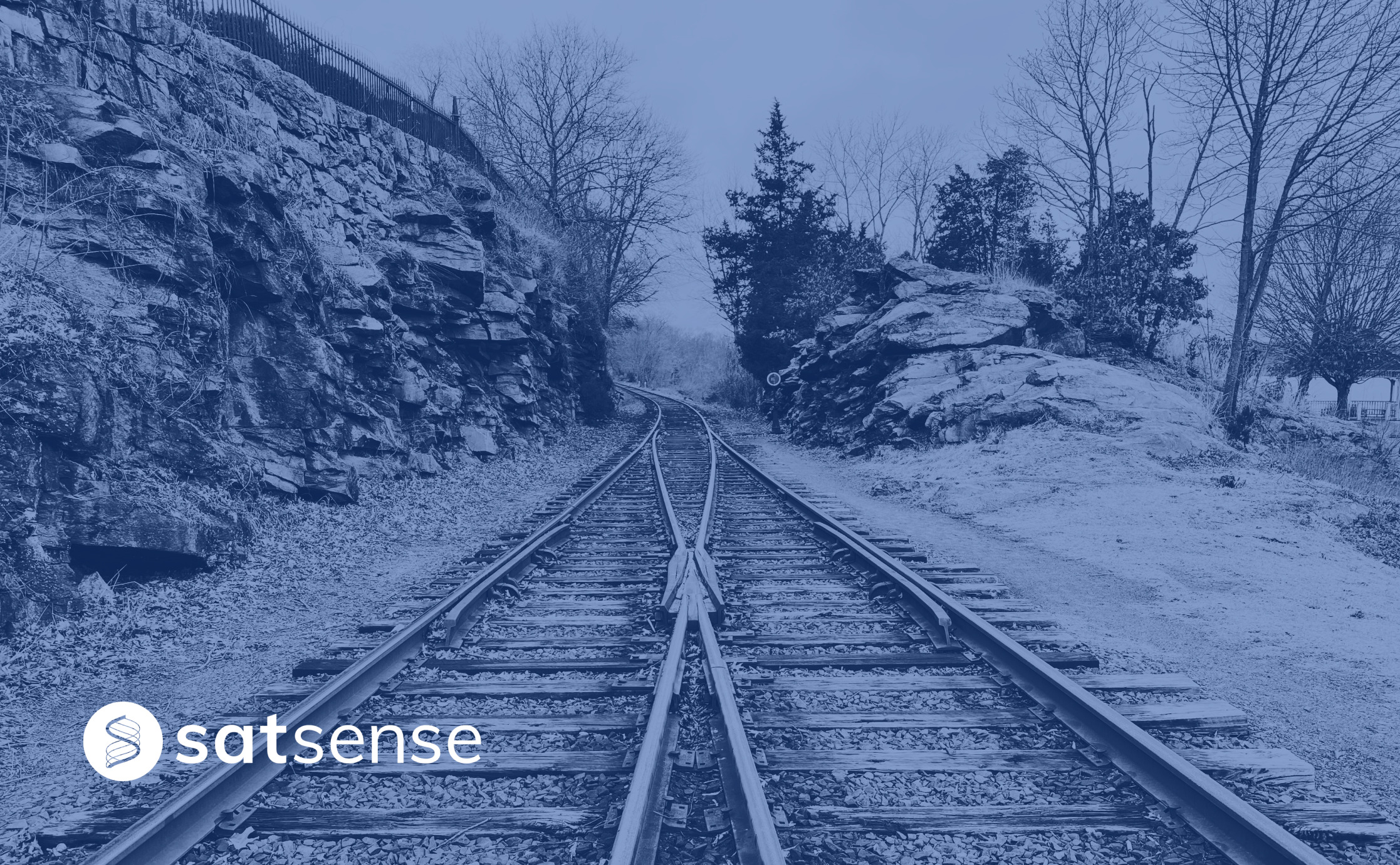Great Britain’s railway system is the
oldest in the world. Over 20,000 miles of track and tunnels connect people and places at increasing speeds on a daily basis. It’s by and part of British life to have a moan about a delayed, or worse,
cancelled train, yet less common are gripes about the actual
infrastructure itself. Fortunately! However, as with any ageing infrastructure, it’s important to invest just as much interest into appropriate monitoring and management of the railway system to keep our trains firmly on the tracks and running on time.
A railway washout
The
hat-trick of storms the UK experienced throughout February 2022 greatly threatened our crucial locomotive services. Indeed, the Cambrian Line in Wales was
forced to close after severe damage, with a half-mile stretch of the railway line alone experiencing 33 track washouts. This occurs when flowing water erodes away parts of the railway bed, leaving gaping holes underneath the tracks.
Considering our railways saw more than
380 million passenger journeys in 2020/21, such infrastructural flaws aren’t ideal. Not only have they the capacity to bring integral services to a sudden halt, they also raise safety concerns due to their unpredictable nature.
To counteract the damage, Network Rail has produced an emergency fund of £2 million which will see over 5,000 tonnes of rock armour installed along the Cambrian Line’s embankment. Working to restrict and reduce the speed of water flow, the armour prevents the ballast from getting washed away. Whilst protection like this enables trains to get back up and running quickly after extreme weather events, is reaction the
only way in which we can future-proof our railway network?
How is the behaviour of railway assets monitored?
A variety of environmental factors can influence the behaviour of the minerals and ground holding up, and surrounding, rail. For instance, considerable changes in temperature. Warmer climes cause clay soils to shrink; wetter climes the opposite. The latter also soften the ground and its load-bearing capacity, most prominently results in landslides where railways are concerned. As our understanding of the nature and consequences of these events strengthens, so too should the ways in which we monitor their effects on our infrastructure.
Currently, railways are monitored using a combination of techniques. Most commonly, sensors are placed on some trains and at certain points along the tracks which are supported by regular inspections from asset managers and engineering teams. However, an expanding and ageing rail network is subject to different climatic conditions presents challenges. We may well have enough sensors, but do we have enough human power to correctly install, calibrate, and monitor the assets in a timely manner?
How can InSAR be used to assess ground movement?
That’s where we come in! When assets, like a railway track, can be monitored
remotely, the need and time for physical installation of equipment and personnel to monitor is lessened. Allowing for the observation of more sites, high-resolution images of specific parts of the network are provided regularly, as often as every 4 days. Such a stream of
near real-time data allows asset managers to proactively monitor the railway; they can quickly identify trends in the data that signify existing, or potential, ground movement. This information can be easily manipulated to enable informed decisions about an asset, rather than having to wait for issues to arise.
What’s more, InSAR – the type of radar technique that provides our ground movement data – can be applied across sites where it’s near-impossible to install any other form of monitoring equipment. Not only does this help to identify areas prone to ground movement, but it also puts behaviour into context. The millimetric measurements we retrieve help to paint the fullest picture of the nature of the movement; for example, localised settlement of track or part of a larger feature.
And, in the case of repetitive extreme weather events, asset managers can also access historical data from the same location. Comparisons between the ground surrounding the infrastructure now and six days, weeks, months, or even years ago, can be made, helping determine what the ground might do when exposed to a forecast environmental condition. Informed actions can be put into place to preserve the railway whilst reducing the risk of catastrophe.
Maintaining existing infrastructure
The retrieved data can be more widely applied, too; for instance, it can be used to provide sufficient evidence that demonstrates the over-use, and consequent deterioration, of railway structures.
Our railway network dates back as early as
1825 and now sees over 1.7 billion journeys annually. Obviously, the system wasn’t initially designed with such a large capacity in mind; so, as the network carries a greater load, access to its behavioural background helps to pinpoint areas in which refurbishment or replacement are necessary. In turn, resiliency of the network is increased.
Take the case of HS2; the first stage of
tunnelling under the Chiltern Hills in Buckinghamshire is
now complete. Though more demand for rail traffic increases pressure to add new structures, it’s also a prime example of why we should work to safeguard those already existing. Proactively preserving an asset increases its lifecycle and safety, whilst decreasing downtime and consequent negative societal and financial impacts.
Limiting the need to send engineers to sites, especially
locations remote by nature or over difficult terrain, works to sustain a comprehensive monitoring programme. At such
challenging environments, monitoring arguably matters the most; equipped with earlier warnings of troublesome factors, from defects to instability, engineers can work remotely to find a solution to enhance the network with smaller exposure to risk.
As we go full speed ahead into the next locomotive era, harnessing and combining existing technologies effectively will ensure a greater visibility over, and understanding of, our beloved railway network.
Would you like to understand more about how InSAR could aid your asset monitoring?
Get in touch with our team of specialists!

